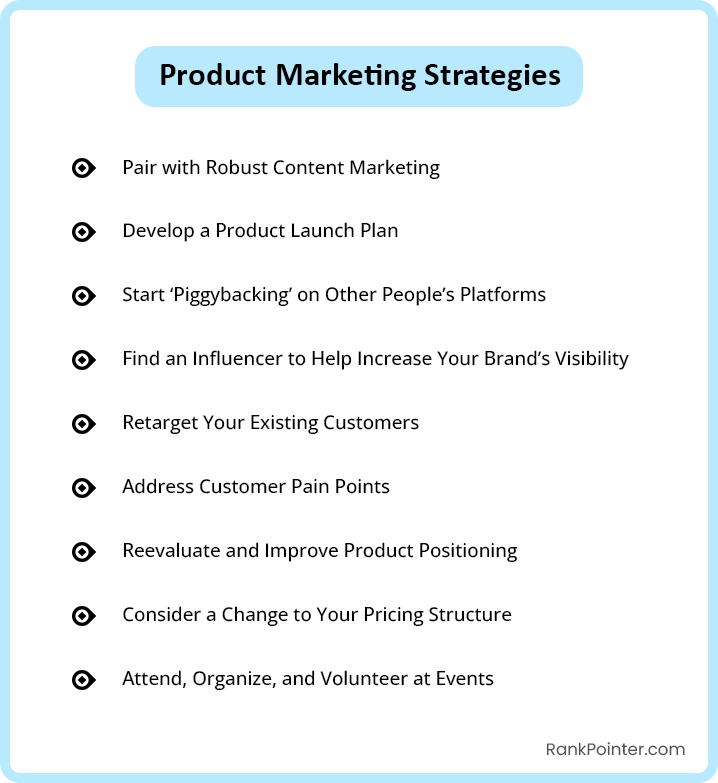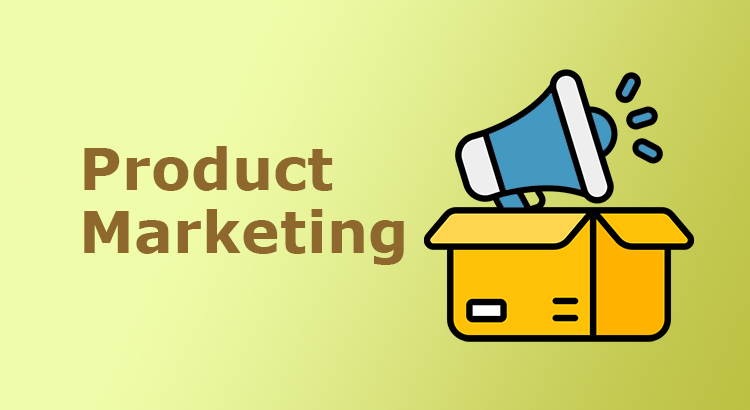A distinctive product marketing strategy is essential for businesses to effectively sell their products. The success of a product in the market is directly correlated with the strategy employed for its marketing. This article delves into various aspects of product marketing, its importance, strategies, and major examples.
What Is Product Marketing?
Product marketing is more than just advertising; it’s the holistic approach to launching and promoting a product to its intended audience.
It involves a deep understanding of customer needs, competitive analysis, and the development of compelling messaging to differentiate the product in the market.
Importance of Product Promotion
1. Enhance Customer Understanding
Implementing a product marketing strategy fosters customer engagement, enabling insights into their preferences and behaviors, thus facilitating effective customer research and refinement of product offerings.
2. Targeted Buyer Persona Development
Product promotion aids in identifying and targeting specific buyer personas, aligning product innovation with their needs, and crafting compelling value propositions to cater to their requirements.
3. Competitive Insights
Through product marketing, businesses gain valuable insights into competitor products and marketing tactics, enabling strategic differentiation, identification of unexplored opportunities, and refinement of marketing strategies for competitive advantage.
4. Alignment Across Teams
Effective product promotion ensures alignment between marketing, product, and sales teams, facilitating clear communication and understanding of the product’s value proposition, enhancing overall operational efficiency and effectiveness.
5. Strategic Positioning
Product promotion facilitates strategic positioning of the product in the market, ensuring consistency in brand image and tone while considering market suitability, differentiation from competitors, and past product performance for informed decision-making.
6. Revenue Enhancement
By critically evaluating product-market fit and differentiation, product marketers can optimize strategies to boost revenue and improve sales, ensuring sustained success and relevance in the ever-evolving market realm.
Product Marketing Strategies
Check out the important product promotion strategies
1. Pair with Robust Content Marketing
Content marketing offers a versatile toolkit to showcase your product’s value even if it doesn’t have a flashy appeal.
From engaging blog posts to informative videos and downloadable guides, diverse content types can captivate and educate your audience, driving interest and conversions.
2. Develop a Product Launch Plan
A well-executed product launch plan is crucial for ensuring timely and successful market entry.
This plan should encompass pre-launch activities like market research and messaging refinement, as well as a seamless launch and post-launch strategies to sustain momentum and address feedback effectively.
3. Start ‘Piggybacking’ on Other People’s Platforms
Leveraging established platforms and trends can amplify your product’s visibility and reach.
By strategically aligning with complementary brands or riding the wave of emerging trends, you can tap into existing audiences and accelerate your market penetration.
4. Find an Influencer to Help Increase Your Brand’s Visibility
Influencer marketing partnerships offer access to pre-established audiences and can lend credibility to your brand.
Identifying influencers aligned with your target demographic and engaging them to endorse your product can significantly enhance brand visibility and trust.
5. Retarget Your Existing Customers
Existing customers are valuable assets for driving repeat business and fostering brand loyalty.
Implementing retargeting strategies through custom ad campaigns and email marketing can keep your brand top-of-mind and encourage further engagement and purchases.
6. Address Customer Pain Points
Understanding and addressing customer pain points is essential for cultivating loyalty and satisfaction.
By empathizing with your audience’s challenges and offering solutions through your products or services, you can position your brand as a trusted ally and drive conversions effectively.
7. Reevaluate and Improve Product Positioning
Continuously assessing and refining your product positioning based on market feedback and evolving trends is critical for staying competitive.
Embracing agility and adaptability allows you to seize new opportunities and tailor your messaging to resonate with changing consumer needs.
8. Consider a Change to Your Pricing Structure
Pricing plays a significant role in consumer behavior, and experimenting with different pricing structures can yield valuable insights.
Whether through price adjustments or targeted promotions, strategic pricing changes can influence purchasing decisions and drive sales growth.
9. Attend, Organize, and Volunteer at Events
Face-to-face interactions at events provide valuable opportunities to forge personal connections and showcase your product’s value proposition.
By actively participating in relevant industry events and networking opportunities, you can build relationships, gather feedback, and nurture leads effectively.

Product Marketing Examples
Numerous examples of promotion of product can be seen across various industries. From Apple’s sleek and minimalist product presentations to Coca-Cola’s emotive and universally appealing advertising campaigns.
Summary of Product Promotion
Product marketing requires a deep understanding of customer needs, market dynamics, and effective communication strategies. By implementing robust marketing strategies and leveraging compelling examples, businesses can enhance their product’s visibility and ultimately achieve success.


